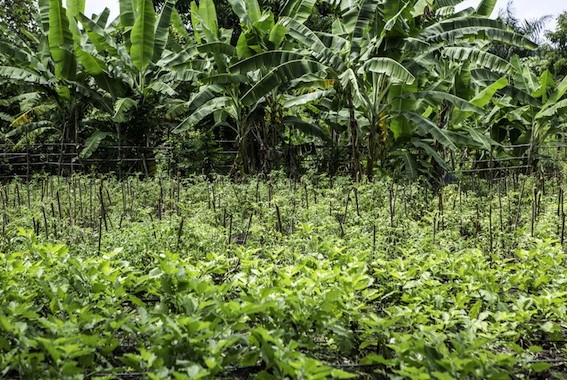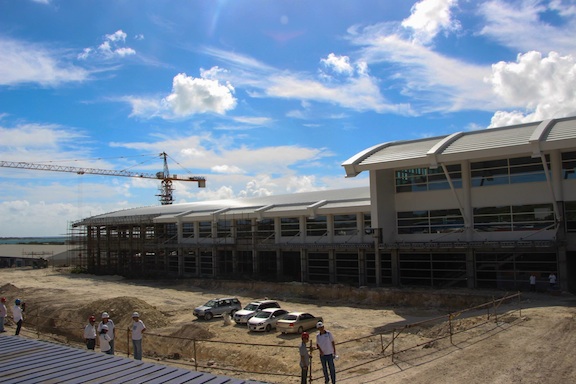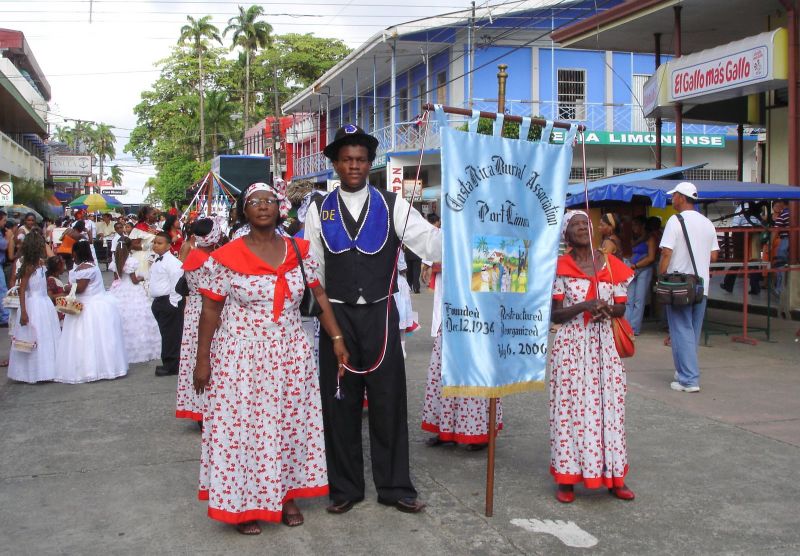Cooking With Green Charcoal Helps to Reduce Deforestation in Haiti
Posted by Anna-Maija Mattila Litvak on Thursday, March 13th 2014
An organization in northern Haiti is promoting a cooking fuel made from agricultural waste that can save trees, help farmers increase their yields and generate additional income.
“Our aim is to try to stop deforestation in Haiti by teaching people to switch from cooking with charcoal to using cooking briquettes, small discs made from charred agricultural waste,” said Anderson Pierre, the Supply Chain Manager for Carbon Roots International (CRI), a USAID-supported non-profit organization operating in Quartier Morin.

Workers create cooking briquettes, small discs made from charred agricultural waste, in northern Haiti. Copyright Kendra Helmer/USAID
Despite the fact that only about 2 percent of Haiti’s forests remain, it is difficult to shift habits of cooking with wood charcoal to methods that are environmentally friendly. According to Pierre, other alternative fuels are still not well-known – or accepted.
“We work little by little, changing perceptions and providing information on the benefits of using briquettes,” Pierre said.
CRI employs smallholder farmers and entrepreneurs to produce carbon-rich char from agricultural waste such as sugarcane bagasse, the fibrous matter that remains after sugarcane stalks are crushed to extract their juice. CRI uses this waste to create two innovative products: renewable charcoal cooking briquettes called “green charcoal,” and “biochar,” a potent natural soil additive that increases soil fertility and removes carbon from the atmosphere. CRI sells the briquettes as an alternative to traditional wood charcoal through a network of women retailers, and disburses biochar back to farmers to increase crop yields and further raise incomes.
As a result, the project contributes to the sustainability of Haitian agriculture and provides income opportunities for women entrepreneurs. It offers a comparably priced, locally appropriate green cooking fuel to the Haitian marketplace, as well as encourages the adoption of biochar as a viable tool for increasing agricultural productivity and soil resiliency.
CRI’s efforts to promote green charcoal are gradually gaining ground in northern Haiti. While they’ve been focusing on market research and production, they plan to expand to bulk sales and more roadside kiosks this spring. In December, CRI ran a public awareness campaign in Quartier Morin under the slogan “Green Charcoal is Your Charcoal”, using demonstration stands and offering free samples of briquettes.
“The Haitian consumer likes the fact that this comes from a source other than wood. People have heard about a Haiti that used to be green. They understand that deforestation is not good. If they have an alternative, they will go for it,” said Ryan Delaney, co-founder of CRI. The briquettes are 5 to 10 percent cheaper to buy than wood-based charcoal and they can be burned in a traditional cook stove, making it an attractive fuel alternative.
USAID is supporting CRI through a $100,000 Development Innovation Ventures award. The USAID award has helped CRI prove itself — it developed a network of producers, started production and created viable markets for biomass products.
“We want this to be a self-sufficient project,” Delaney said. “We have just purchased a machine that can increase the briquette production from 3,000 briquettes a day to 3 tons an hour. There is a lot of sugarcane production in Haiti providing the needed sugarcane waste…. Right now we sell small-scale, but we have ambitious expansion goals.”
Delaney estimates the charcoal market in Haiti to be valued at about $700 million a year (approximately $90 million in northern Haiti). “The potential to scale in Haiti and beyond is enormous, as there is little centralized production of charcoal,” he said.
This month, the U.S.-based CRI expects formal operations to begin for their for-profit entity in Haiti, called Carbon Roots Haiti, S.A. Eventually CRI wants to hand over green charcoal production to Haitians, Delaney said. “Ultimately, we envision this as a Haitian company run by Haitians.”
Launched in October 2010, USAID’s Development Innovation Ventures (DIV) holds a quarterly grant competition for innovative ideas, pilots and tests them using cutting-edge analytical methods, and scales those that demonstrate cost-effectiveness and widespread development impact. DIV uses a staged-funding model inspired by venture capital to invest comparatively small amounts in relatively unproven ideas, and continues to support only those that prove effective.
For more information on DIV and how to apply, go to http://www.usaid.gov/div. For more information on CRI visit http://www.carbonrootsinternational.org/ and see photos of CRI in Haiti on Flickr.
Read another story about how USAID is fighting deforestation through an improved cooking technology program.
Anna-Maija Mattila Litvak is the Senior Development Outreach and Communications Officer for USAID/Haiti.
http://blog.usaid.gov/2014/03/cooking-with-green-charcoal-reduce-deforestation-haiti/





















































 Fernandez doing it big
Fernandez doing it big